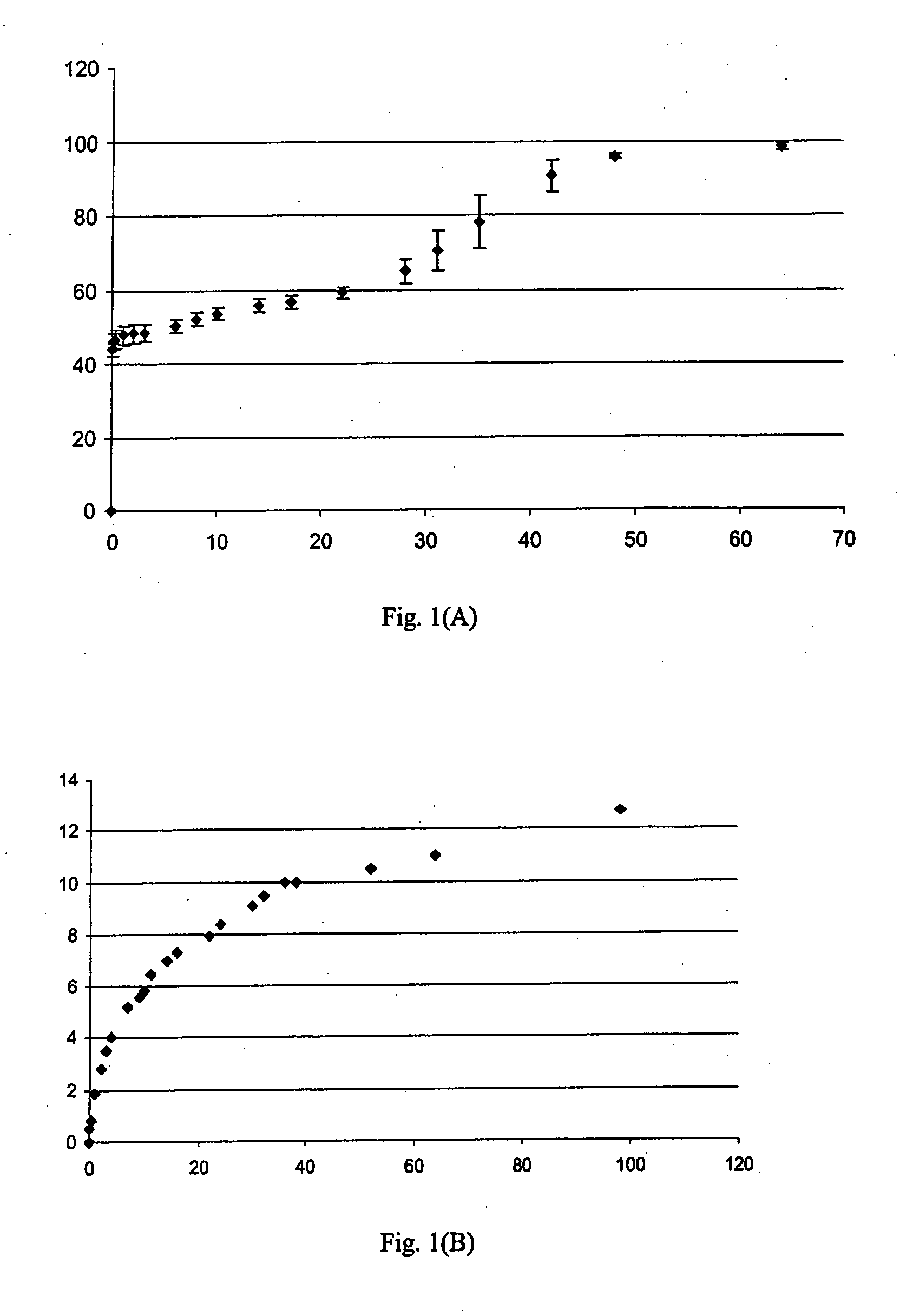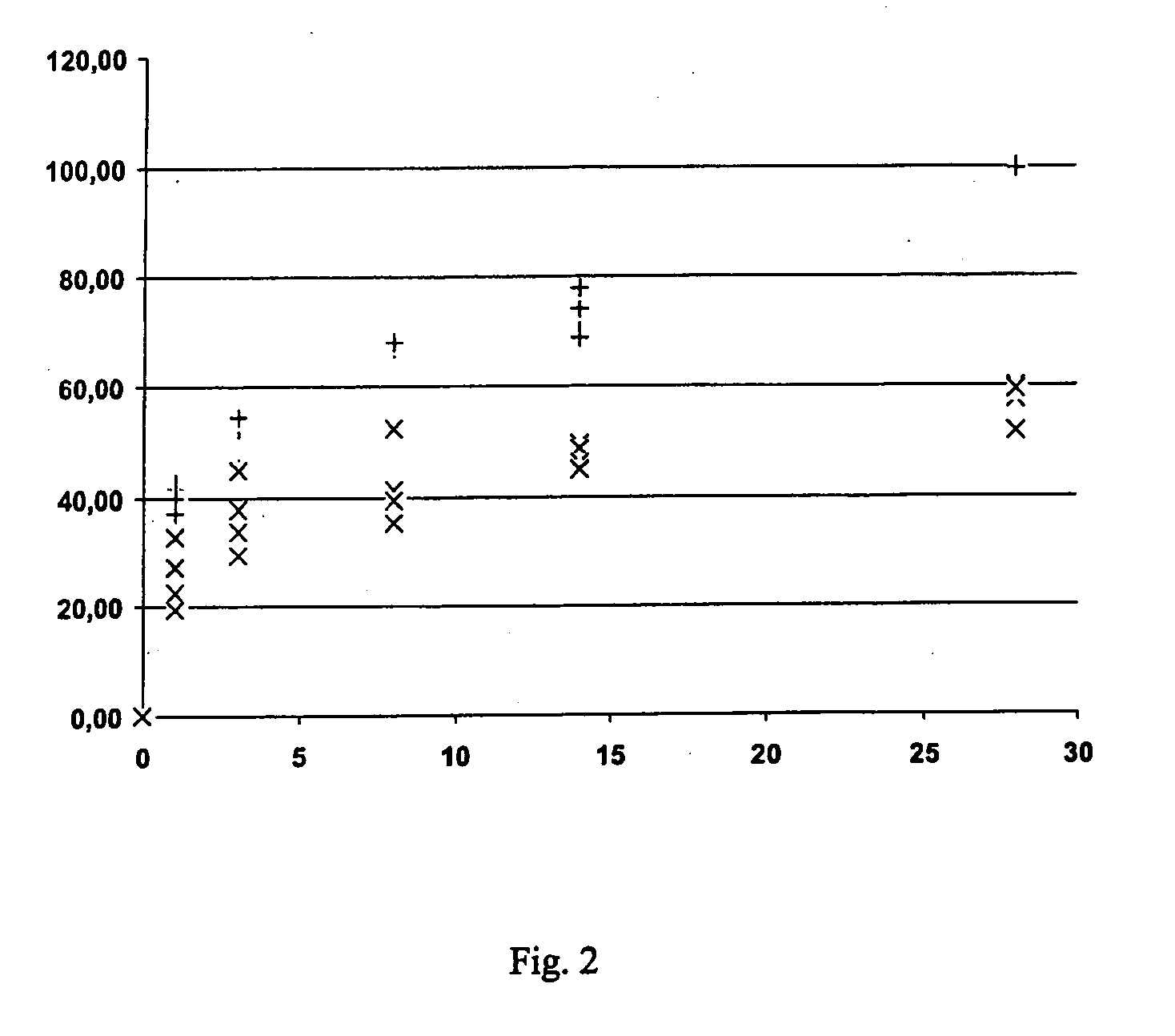Drug eluting stent with a biodegradable release layer attached with an electro-grafted primer coating
a biodegradable release layer and stent technology, applied in the field of adhesive primers, can solve the problems of poor coating pro-healing (long-term) behaviour, cracking and delamination, etc., and achieve the effects of good adhesion properties, good pro-healing behaviour, and good pro-healing
- Summary
- Abstract
- Description
- Claims
- Application Information
AI Technical Summary
Benefits of technology
Problems solved by technology
Method used
Image
Examples
example 1
Electro-Grafting Solution Formulation
[0104] One embodiment of the present invention is exhibited by the formulation of an electro-grafting solution based a vinylic monomer n-butylmethacrylate (BuMA) dissolved in a DMF solvent. NaNO3 is used as an electrolyte support.
TABLE 1electro-grafting solution formulationConcentrationDiazoNO2of vinylictetrafluoroborateNaNO3%monomerConcentrationconcentrationGlycerolDMF30%10−3M2.5 · 10−2M5%65%
example 2
Electro-Grafting Process on Stainless Steel Stents
[0105] Using the chemical solution described in example 1, 18 mm stainless steel coronary stent (ClearStream Technologies) were coated with electro-grafted p-BuMA with the following parameters, rinsed and dried for 60 minutes at 40° C. under a 10 mbar vacuum. Using that method the obtained coating thickness is about 150 nm.
Electro-Grafting Parameters:
[0106] Method: Cyclic voltammetry from open-circuit potential to −3,2V / CE with argon bubbling (2 Lmin−1).
[0107] Scan number: 50 scan
[0108] Scanning rate: 50 mV / s.
EXEMPLE 3
Electro-Grafting Process on Cobalt-Chromium Stents
[0109] Using the chemical solution described in example 1, 18 mm cobalt-chromium coronary stent (Natec-medical) were p-BuMA electro-grafted with the following parameters, rinsed and dried for 60 minutes at 40° C. under a 10 mbar vacuum. Before the electro-grafting, stent surface is treated by a solution of NH4F 40% for 1 minute. Using that method the obtained co...
example 4
Corrosion Barrier Properties of Electro-Grafted p-BuMA
[0113] The anticorrosion potential of electro-grafted p-BuMA is assessed on coated stainless steel coupons synthesized according to the protocol described in example 2.
[0114] For this purpose, electro-grafted p-BuMA coated coupons (assay) and non coated coupons (control) are immersed in a NaCl solution, at 9 g / l according to a ratio surface area / volume of cm2 / ml. The samples are kept at 37° C. under gentle stirring and the time course of cobalt, nickel and molybdenum ions liberation is assessed by regular sampling of release medium. The ions are quantified using Inductively Coupled Plasma-Mass Spectrometer (ICP-MS).
TABLE 2ion releaseIon release (ng / cm2)in a 9 g / l NaCl solution at37° C. during 150 daysNiCrMoBMS 316L28128p-BUMA (150 nm)371on BMS 316L
[0115] The ion release from the metallic surface is strongly reduced by the electro-grafted p-BuMA coating for example the released nickel (which is by far the most toxic element) d...
PUM
| Property | Measurement | Unit |
|---|---|---|
| Thickness | aaaaa | aaaaa |
| Thickness | aaaaa | aaaaa |
| Thickness | aaaaa | aaaaa |
Abstract
Description
Claims
Application Information
 Login to View More
Login to View More - R&D
- Intellectual Property
- Life Sciences
- Materials
- Tech Scout
- Unparalleled Data Quality
- Higher Quality Content
- 60% Fewer Hallucinations
Browse by: Latest US Patents, China's latest patents, Technical Efficacy Thesaurus, Application Domain, Technology Topic, Popular Technical Reports.
© 2025 PatSnap. All rights reserved.Legal|Privacy policy|Modern Slavery Act Transparency Statement|Sitemap|About US| Contact US: help@patsnap.com



